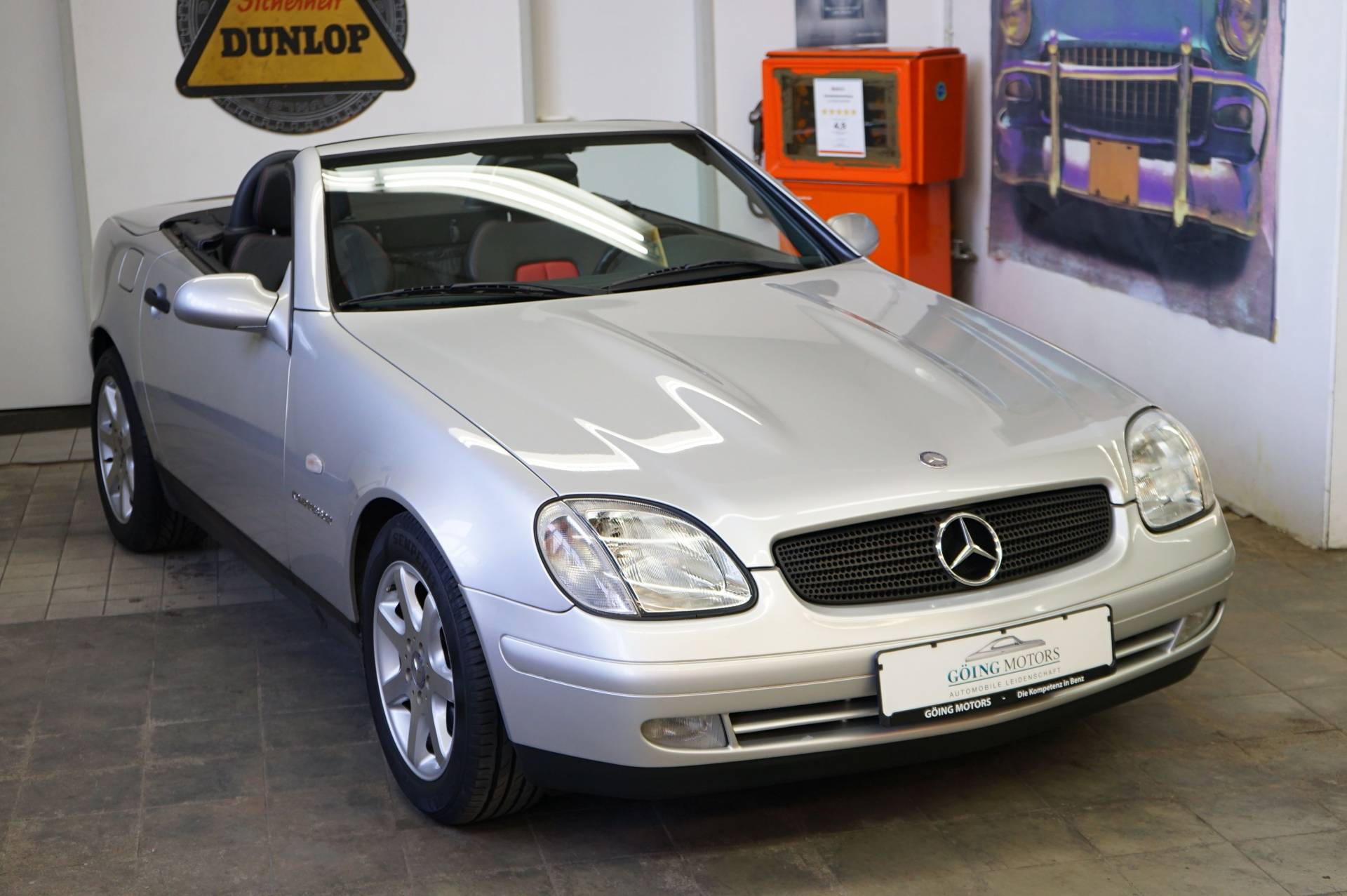

With roof up, Sport mode engaged and shifting manually, it’s a compact and defthandling coupé to bother BMWs with. The result is a remarkable dual-role machine.

Roof up, you hear little squeaks and rattles, but those slabs of steel effectively brace the car in a way that no canvas top could hope to. There is scuttle-shake though, although you can pretty-much neutralise it by pressing down on the little plastic model roof and watch the Vario perform in reverse. Insulated it may be, but it’s precise, and similar to the MGF. But unlike Mercs of yore there isn’t a slack dead-zone in the middle. Once you’re acclimatised to moving the gear lever right to shift up and left to shift down, you can go on a proper B-road attack in the SLK.Īdmittedly its recirculating-ball steering lacks feel and feedback compared to the rack-and-pinion setups it’s up against here. Thankfully though it has a manual-override mode that allows ratios to be flicked through sequentially, and changes are near-instantaneous so long as they’re accompanied by a throttle lift. Left to its own devices, changes on the automatic gearbox are slow-witted. Flick the gearbox into Sport mode and it holds ratios a little longer, the supercharged 2.3-litre straight-four whooshing and screaming beyond 5000rpm, genuinely translating into Boxster-humbling pace. Compared to the cramped Z3 and ergonomically awkward Boxster, its driving position is straight-legged and hard to fault. The deliberate dischord between the angles of doors and bonnet, and the way the rear light clusters eat into as much of the sides as they do the rear, bring to mind Nineties postmodern architectural forms from the likes of Zaha Hadid and Daniel Libeskind, all clashing steel shards and towers of unusual glass formations.ĭon’t let its almost inevitable automatic gearbox fool you into thinking it’s not a proper sports car. Viewed side-on, the SLK is a striking wedge.

Interestingly, 300SL bonnet humps aside, Mercedes designer Bruno Sacco avoided the retro-inspiration road paved by Mazda, BMW and Porsche. Mercedes even went to the extent of ensuring its angles mimicked those of a Fifties 300SL’s gullwing doors as it arced backwards. One that I’m about to enjoy the fruits of as I hold back the little roof-shaped switch on the centre console.Īn SLK’s Vario-Roof in action is pure automotive theatre. In 1993, rather than releasing a concept car in the manner of Porsche, Mercedes filed a patent. But it needed a USP of a kind its rivals couldn’t muster.
MERCEDES BENZ SLK 230 KOMPRESSOR PERFORMANCE SPECIFICATIONS SERIES
By 1991, Mercedes was feeling the need for something smaller and cheaper, based on the shortened floorplan of its forthcoming C-class 3 Series rival. Its big-brother R129 SL was considered one of the finest cars in the world upon its 1989 launch, retaining R107 deportment while adding Corvette-like sportiness. Some of the issues commonly associated with this vehicle include excessive oil consumption, timing chain tensioner oil leak, and engine control module (ECM) problems.The R170 Mercedes-Benz SLK is another German recession-baby. While it's not perfect, the Toyota 1ZZ engine is dependable and durable, with an impressive ability to withstand abuse. The kit added 7.5 lbs of boost and a 40 hp and 38 lb-ft of torque increase at the wheels. Toyota also offered a factory-supported bolt-on supercharger kit from 2003 to 2004. Applications for this engine are on the Toyota Corolla, Toyota MR2 Spyder, Toyota Wish, Toyota Allion, Toyota Matrix, and even the Pontiac Vibe. Ranging from sedans, coupes, small SUVs, and even mid-engine cars. This engine was such a success that they decided to equip it with various cars. Toyota Corolla, Toyota MR2 Spyder, Toyota Wish, Toyota Allion, Toyota Matrix, Pontiac Vibe Related: 10 Best Toyota Camry Models For First-Time Car Buyersġ.4 liters (85.3 cu in) 1.6 liters (97.5 cu in) 1.8 liters (109.5 cu in) 1.8 liters (109.6 cu in) Some of the issues commonly associated with this engine include transmission problems and water pump issues. But like most powertrains, it is not perfect. Overall, the 2AR-FE is an exceptionally dependable engine. This helps with the engine's better fuel efficiency, and its engine applications are available in the Toyota RAV4, Toyota Camry, Toyota Alphard, and Scion TC. This engine incorporates the new technology, the variable valve timing on both intake and exhaust, or the dual VVTi. It's an inline-four engine with a die-cast aluminum engine block and aluminum DOHC head. The Toyota 2AR-FE engine is one of Toyota's most economical engines ever produced. Toyota RAV4, Toyota Camry, Lexus ES250 (XV60), Toyota Alphard, Scion TC


 0 kommentar(er)
0 kommentar(er)
